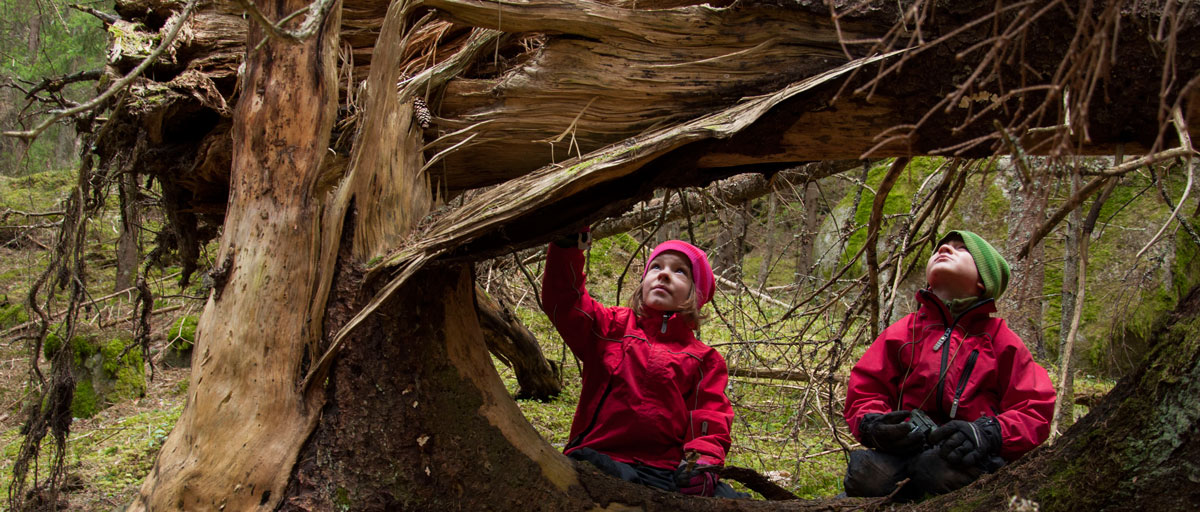
A recently published study shows that children who spend more time in nature show a better understanding of natural resources and environmental degradation. Photo: F. Wilde/Azote
Reconnecting to nature
Urban sustainability – a child's play?
Children who spend more time in nature show a better understanding of both natural resources and environmental degradation
- Children who have spent more time in nature have developed a higher affinity with animals and the environment
- Researchers are calling for a reconnection to the biosphere
- Underlines the importance of designing cities that allow for and encourage affinity to nature
By 2050 the global urban population is projected to grow by 2,7 billion people. Much of the urban space needed by then is still to be designed and planned for, but how will the changing urban environment affect us? And how can we design urban environments that can continue to nurture our connection with nature? Those issues still constitute 'blind spots' in sustainable urban design and planning.
In a study recently published in the journal Children, Youth and Environments, Centre PhD student Matteo Giusti, together with Centre researcher Stephan Barthel and Lars Marcus from the School of Architecture at the Royal Institute of Technology (KTH) in Stockholm, have compared how two groups of children in preschools in Stockholm relate to nature.
Same same but different
The preschools were chosen to be similar in most aspects, apart from their access nature environments. This affected the frequency with which the children in each preschool visited natural environments during outdoor activities.
"In order to be able to properly look at the children’s nature routine as the determining factor we chose preschools in Stockholm with the same pedagogic framework and compared two preschools that have rich nature routines with five preschools that have poor nature routines. We also made sure the children who took part in the study came from similar conditions. They were all Swedish, with parents belonging to the same socioeconomic group," explains Giusti.
"We see a clear correlation between children’s nature routines and their ability to feel empathy for non-human creatures, to be concerned about environmental degradation and to recognize the role of ecological resources for everyday objects"
Stephan Barthel, co-author
Playing a serious game
To examine the way the children thought about nature, teachers at the pre-schools were instructed to play games with each child. The games were designed to ask different questions relating to feeling empathy with non-human beings, understanding natural processes and recognizing healthy versus polluted environments.
"The teacher would for example lay out cards on a table, showing a cat, a fish and an airplane, asking the child which one of those could feel pain," explains Giusti.
"Another game was asking about what you need to have to get different things. The teacher would for example show a card with a woollen sweater on it and then ask the child to pair it with one of three other cards showing what was required to make the sweater, for example a sheep, a lorry or money."
A third game asked the children to rate images as positive or negative, for example a healthy forest or a river full of garbage.
The results from the games show that children who have spent more time in nature are better equipped to feel empathy with living creatures; have better ability to link ecological resources with products that they use in their daily life; and are better at identifying polluted environments as something negative and "clean" nature as a good thing. The authors conclude that these children in this sense seem to have developed a higher affinity with nature.
In one aspect of their relation to nature and the forest the children in the two groups shared the same attitude: they were all equally cautious about playing alone in the forest where one can get lost and where it is still a little bit scary.
Getting back in the woods safely
As human populations are becoming increasingly urban dwellers and environmental challenges are critical, researchers are calling for a reconnection to the biosphere as an important part of steering towards a sustainable future.
This type of reconnection may not be solely dependant on the ability to rationally reflect on the role of ecosystems and their functions. The human capacity to emotionally connect may be an equally important part.
"We see a clear correlation between children’s nature routines and their ability to feel empathy for non-human creatures, to be concerned about environmental degradation and to recognize the role of ecological resources for everyday objects," concludes Barthel.
"This speaks loudly to how our everyday environment affects our connection to nature. And as cities are where most people will live, it underlines the importance of designing cities that allow for and encourage this connection to flourish in many generations to come."
Citation
Giusti, M., S. Barthel, L. Marcus. 2014. Nature Routines and Affinity with the Biosphere: A Casestudy of Preschool Children in Stockholm. Children, Youth and Environments 24(3): 16-42
Read also
Giusti, M., Barthel, S., Marcus, L. (2014). Nature Routines and Affinity with the Biosphere: A Case Study of Preschool Children in Stockholm. Children, Youth and Environments 24(3), 16-42.
Matteo Giusti is a PhD student at the Centre. His research revolves on how to create spatial configurations of urban nature that support the psychological foundation for environmental stewardship – identification with nature.
Stephan Barthel's research revolves around aspects in relation to management of urban ecosystem services and resilience. Focus is on social as well as ecological features that influence management practices.






